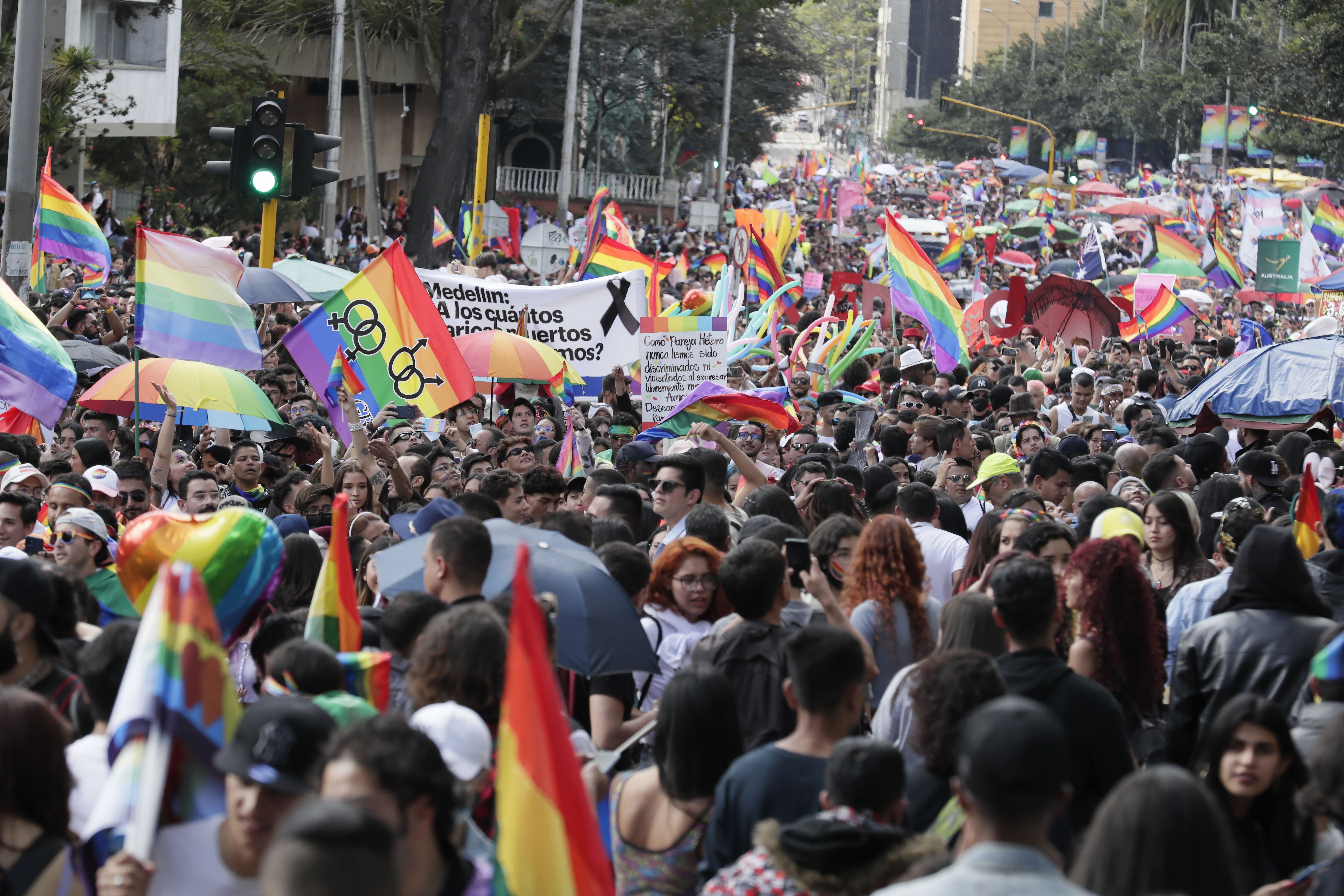Mariana Escobar Bernoske and Felipe Morales Sierra are both reporters at El Espectador, one of Colombia’s biggest national newspapers, working in the Gender and Diversity section and the Judicial section, respectively.
Both a part of the LGBTQ+ community, they find that their identity as queer journalists informs their reporting on their respective beats.
For Escobar Bernoske, much of her experience at El Espectador has been tied to her position as a Gender and Diversity reporter. She never had to “come out” on the job, as she was hired because of her identity as a queer woman. And because of her identity, she feels some sources are more comfortable with her telling their stories. “I think that people are more comfortable telling their stories to someone who, in some sort of way, can relate to the experience, such as being afraid to tell someone how you feel or being afraid how your family would react”, she said.
Some of her peers in the broader journalism world, however, do not take her work seriously, despite the crucial nature of her reporting. “They say that we are not doing journalism because we’re not being objective, we’re not being neutral,” she said. “[But] we say when there’s a thing about human rights, you cannot be neutral.”
To combat this sentiment of perceived impartiality, Escobar Bernoske has learned to rely heavily on documents and data in her reporting. “It makes people see that it’s not just a bunch of queer people saying that they are being attacked, [but] that there’s people that have actually been attacked, and we have these numbers that are proving us”, she explained.
On the judicial desk, Morales’s work is less tied to his identity as a gay man, but it nevertheless informs his work in different ways. In April 2022, for example, a series of murders of gay men took place in Morales’s hometown of Medellín, sparking fear of a serial killer in the LGBTQ+ community. Morales brought his experience as a reporter and his connections to the LGBTQ+ community to bear when covering the story — and in doing so, learned that there was more than one killer. “I feel that it brought calm to people, or at least more information”, he said. “People started to get information, which is my job, to shed light on topics that wouldn’t be seen without my help.”
Even the fact that this story was covered by El Espectador is, in Morales’s opinion, evidence of how his identity helps the outlet diversify its coverage. “A straight person who has not had that life experience wouldn’t have been as [sensitive] and wouldn’t have caught this topic and wouldn’t have picked up on it”, he said.
Still, queer journalists in Colombia face challenges and risks. Online attacks are one of them, Escobar Bernoske said. “Comments and hate will come. But if I truly believe that if you’re making some noise and people are getting angry, it is because you’re doing things right.”
And for many people, there is still a lot of fear in coming out in a professional setting. Morales said, “I know that there is still homophobia and a lot of fear in colleagues to come out to their bosses and be very open about their sexuality.”
Yet both journalists underscored the importance of having a diverse newsroom that reflects the audience they serve. “We know that journalism is in such a crisis to connect with audiences. And journalism, I feel, is in an identity crisis itself,” Morales said, highlighting the importance of having a diverse newsroom. “I think being very transparent and straightforward with where you’re speaking from and what are the things that shape your journalism and your reporting is something that audiences value very much.”
Escobar Bernoske shared a similar sentiment. “At least in Latin America, these independent media outlets are being created, being made from and by and just for the people itself, it helps create a different approach”, she said. “Because at the end of the day, in the traditional media, people do not identify with the way they’re covering these issues.”
This article was published as part of a series on LGBTQ+ journalists around the world. To read the rest of the series, click here.
